Wrap up the Package: Cash Wraps that Work
“Next in line” (sometimes but not often followed by “please”) is the most common sentence heard by consumers shopping in today’s retail environment. It’s no wonder that the number-one consumer complaint for American shoppers is waiting in line. When the shopper cannot expect even an efficient “May I help you?” much less a cordial “Good morning,” it becomes obvious that customer interaction has been reduced to hustling the time-starved shopper through the checkout line.
A major grocery chain in the Atlanta market has actually bought billboards announcing that all lanes are open between 5 and 7 p.m. I wonder if such advertising doesn’t encourage more customers to shop during these peak hours, assuring that even with all lines open, shoppers must still stand in line. Whatever the effect, desired or not, of this paid advertising, it is certainly the result of customer feedback about the problem of waiting in line.
In my own experience with garden center renovation, it is often the clogged checkout that is the final straw forcing staff and management to do something to make the store work better. Fundamentally, store design is the art and science of getting merchandise into the store efficiently, getting the customer in contact with the most merchandise possible and getting the customer and the merchandise out the door efficiently. Most store layout and customer flow problems start much earlier in the store than the cash Á register area often right at the entrance. Problems are compounded through a labyrinth of narrow aisles, dead ends, retail ooze and “obstructures,” finally culminating in mass confusion at the cash register. In a future issue, we’ll back a cash register problem up to its starting point in the store; for now, we’ll concentrate on what can be done at the site of congestion.
Placement
Like all parts of a retail garden center, the cash register area must be expended and contracted seasonally; the store needs more registers during its busiest season. The quick, and less desirable, fix is to add cash registers in another area of the store usually outside. Such a move often leads to even greater confusion inside the store and also gives the negative effect of allowing customers to shop only one part of the store thereby lessening customer-merchandise contact. Allow-ing the customer to shop the annual area and pay at an exterior cash register without walking through perennials, soil amendments, fertilizers, tools or woody departments is the last thing a savvy retailer wants to do. For those of you who suffer from “I had no idea you had so much product” or “I had no idea you were this large” insults, look to your cash register placement in your busiest times. Chances are you’re sacrificing customer merchandise contact by allowing the spring rush customer to shop only a small portion of your store.
I sound like a “broken record” about the importance of a store layout on paper, but often a site plan that shows entrances and exits and where customers are shopping (and not shopping) during the peak season is the quickest way to slap yourself in the face. You have to ask yourself if your cash register placement is allowing a large percentage of your retail real estate not to work during your peak traffic flow when the greatest number of customers can see your complete product line.
Technology
Technology can help relieve congestion at the cash register. New scanning systems allow for a faster and more accurate checkout. The added value of inventory management and data collection greatly enhances the store’s capabilities. I recommend to all my customers that they make point-of-sale (POS) systems a number-one priority for evaluation at trade shows. Some trade groups are offering POS comparison-shopping opportunities; at the last Innovation Lab sponsored by the American Nursery and Landscape Association, a Point of Sale Pavilion proved to be one of the most popular venues. Ten companies set up working POS models. Participants moved from one working cash register to the next, making for easy comparison. A similar venue worked for Retail World sponsored by the Southern Nursery Association at the SNA 2003 The World’s Showcase of Horticulture show.
Efficiency
No technology will compensate for poor placement that results in congestion. Use the following suggestions to evaluate just how you might improve the efficiency of your cash register area. If you do this with a site plan in front of you and several walks through your store, you’ll Á have a good chance of improving the cash register area of your store for both customers and employees.
Place all merchandise behind the cash register area. One of our industry’s most difficult retail habits is to expand the store in front of the cash register often into the parking lot in order to increase inventory and to use product as signage. First, invest in a professional sign and an inviting street side planting to create street side appeal. We’ll take up the topic of street side presence in a subsequent article, but suffice it to say that sacrificing parking to product while complicating your store’s customer flow pattern is a poor trade off.
Group all registers at a single exit. What this really means is creating a distinct entrance and exit connected by a single store-penetrating aisle. (Remember that site plan.) You’d like to have registers visible from the entrance but not directly in front of it. Customers who see an employee upon entering the store are less likely to become a security risk. Greeters at Wal-Mart and Lowe’s aren’t just there for hospitality. Cash register staff can also act as store greeters, establishing a more comfortable atmosphere in the store. Like all garden center employees, you simply have to train them to lift their eyes. Cash register disease is a mutation of watering wand disease both strains of the virus cause employees to be deaf and blind to the presence of a customer. As a result, they are rendered mute, and you run the risk of your customer hearing only the ubiquitous “next in line” as the only human voice they hear in the store.
Install enough registers to handle customer flow. Here’s where expansion and contraction come into play. You must allocate enough space and electrical outlets for the busiest days but be prepared to remove cash wraps when they are not needed. Here’s where a professionally designed cash wrap counter system saves the day. If you install the electrical and invest in an adequate number of POS units, you only need to roll the cash wrap kits in and out of the store as needed. Such a kit has not been available in the American market but many of you who have toured UK garden centers have seen these units.
All traffic moves toward registers from a single direction. Here’s where the store-penetrating main aisle comes into play in your layout. (Guess what? We’re looking at that site plan again.) One of the most difficult cash register problems to manage is customers approaching from more than one direction. Lines get tangled, carts bump into ankles and “next in line” are fighting words. Even if customers remain pleasant, the confusion creates stress for employees and customers. And, there’s enough of that already.
All traffic moves past the registers. When customers approach a cash register and then make a 180° turn to leave the area, there is no way to avoid congestion. The only plus is that everyone gets to practice “excuse me” often.
Confine impulse sale items to the approach aisles. Now, if you haven’t established that entrance/main aisle/exit pattern, you cannot even find the approach aisle. The approach aisle should direct customers past the cash register, but it should also direct customers past gifts, gloves, small bags of soil amendment, water holders, magazines anything that the customer might pick up after making a primary purchase. If you place these items in a confined location directly adjacent to the cash register, you can then provide an add-on sales list for your cash register employees. These items are also displayed in other locations in the store, but that’s another article.
Use exit signage to bend time. Anything the customer needs to know in order to make another trip to your store or anything the customer needs to make that day’s purchase more successful can be placed on the approach to the cash wrap information sheets in a convenient kiosk; notices of upcoming events on dry erase boards. Both can distract the customer from the wait in line.
Clear and clean counter tops. The only thing on the cash register counter top should be the customer’s purchase and her pocketbook. Your customers need room to write a check, accept change or sign her credit card receipt. This is not the place for merchandise or messages. Install a paper towel rack under each cash register and instruct employees to wipe the counter. Your customers won’t like a wet checkbook or a dirty pocketbook.
Clear and clean behind and under the counter top. Use the wall behind the cash register for your store’s logo. Customers do not read hand-lettered signs listing 15 bagged goods products. If you need a price list for pick-up items, print it out of your computer in large type and laminate. The employee can then use it with the customer to make selections. Use the space under the counter top for the service items your employees need to complete their work. These items include packaging, wrapping and take-out merchandising like coupons or special offers. They do not include the trash that collects behind most cash wraps. Another main complaint about garden centers is that they aren’t clean. But you can start with the under-the-counter area that the customer is looking at while she waits for her purchases to be rung up. If yours looks like a junk drawer, clean it out.
Create a service counter beyond the cash register. Most stores need space to package products for the customer to take out. The space directly beyond the cash register is a dead zone for shopping because the customer has already made her purchases for that day. This space can best be utilized for the sundry services like pot wrap or even gift-wrapping. Paper or plastic for trunks and string for tying plants is here also. Other service activities like special orders or delivery should be treated as a retail product and handled at a separate service counter inside the retail area i.e., before the customer arrives at the cash register.


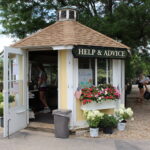
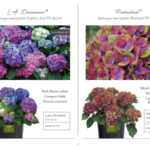

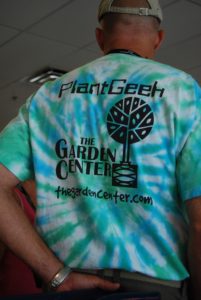


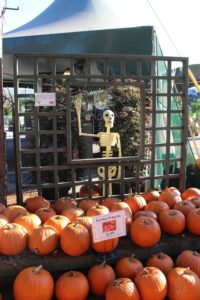
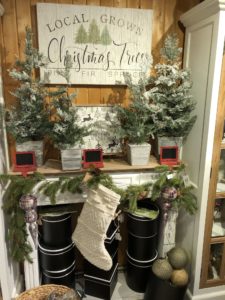
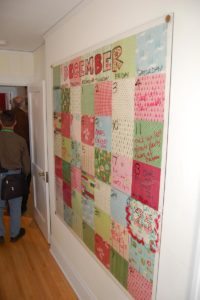
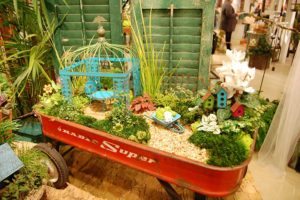
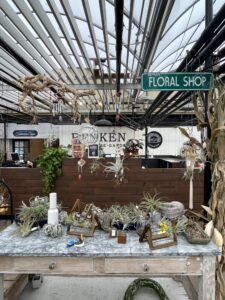
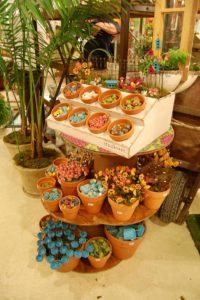
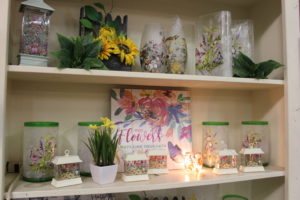
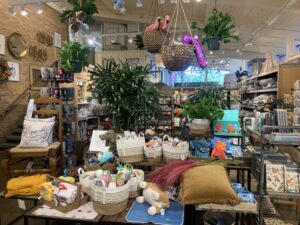
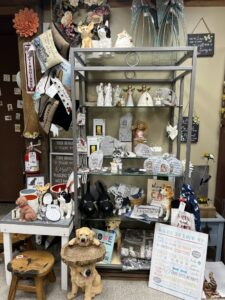
 Videos
Videos





